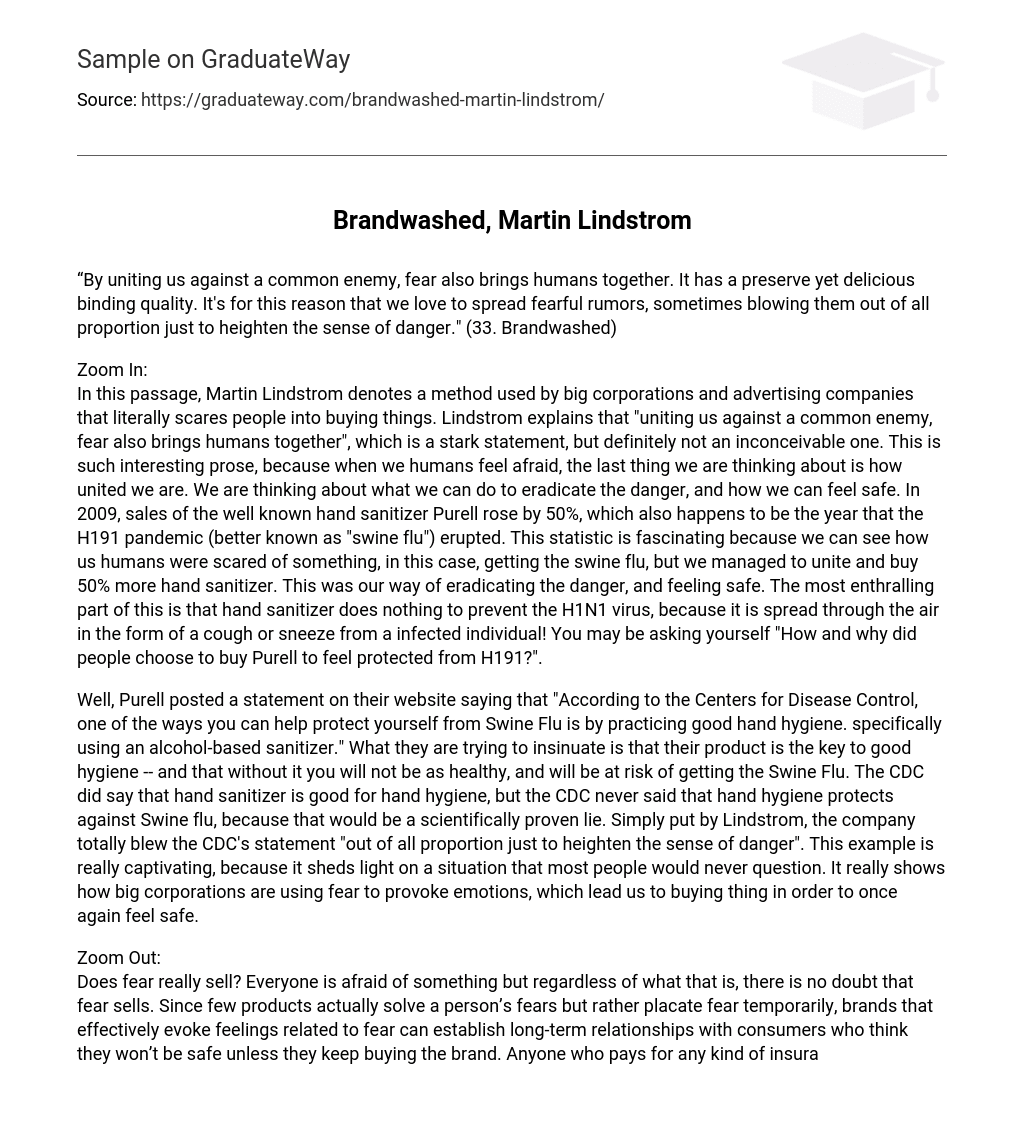According to (33. Brandwashed), fear has a unique ability to unite people and create a sense of camaraderie. It acts as a powerful force that brings humans together in solidarity against a shared threat. Fear also possesses an alluring and captivating quality that can be both thrilling and tantalizing. This is why we have a tendency to enjoy spreading scary rumors, often exaggerating them to intensify the feeling of danger.
According to Martin Lindstrom, fear is utilized by large corporations and advertising companies to induce individuals to purchase products. Lindstrom suggests that fear not only unites people against a shared enemy but also fosters human connection. This idea may seem incredible, yet it is captivating. When individuals experience fear, their primary focus shifts towards eliminating the threat and ensuring their safety rather than promoting unity. Notably, during the H1N1 pandemic in 2009, sales of the popular hand sanitizer Purell surged by 50%. This surge is significant as it illustrates how people were afraid of contracting swine flu yet still came together to buy more hand sanitizer. It was their means of combating the threat and feeling secure. What adds further curiosity is that hand sanitizer does not actually prevent the spread of the H1N1 virus, which primarily spreads through respiratory droplets from an infected person’s cough or sneeze. One might question: “How and why did individuals choose to purchase Purell for protection against H1N1?”
According to the Centers for Disease Control, practicing good hand hygiene is one way to protect oneself from Swine Flu. Purell has emphasized this by stating on their website that using an alcohol-based sanitizer is effective. However, it is important to note that while the CDC acknowledges hand sanitizer as beneficial for hand hygiene, they have not confirmed that it specifically protects against Swine Flu. Lindstrom points out that Purell exaggerated the CDC’s statement to create a greater sense of danger. This example highlights how corporations exploit fear to manipulate emotions and drive consumer purchases, revealing a situation that is often unquestioned.
Zoom Out:
Fear is a powerful tool in driving consumer behavior, regardless of the specific fears individuals may have. While products cannot actually eliminate these fears, they can offer temporary relief. By effectively tapping into these fears, brands can establish long-term relationships with consumers who believe that purchasing their brand is essential for their safety. The existence of insurance policies serves as evidence that fear can drive sales over extended periods of time. For example, people buy life insurance because they fear for their family’s well-being after their own passing. Fear is utilized across various industries to sell products and services, using different methods to convey messages of fear. A prime example is the sunscreen industry, which shifted its messaging from promoting a tanned appearance to emphasizing skin cancer prevention. By evoking fear among consumers, sunscreen brands turned a potential branding disaster into an opportunity by persuading them that “Cutting your sun exposure is easier than cutting out a skin cancer.” This message instills fear about the consequences of skin cancer and motivates consumers to purchase more sunscreen.
Almost every person I know has experienced being convinced to purchase something through fear or have encountered an advertisement that utilizes fear as a means of persuasion. I distinctly remember watching an anti-smoking commercial on the morning news once. It showcased real footage of an open-heart surgery, including graphic scenes, to highlight the consequences of lifelong smoking. The intensity of the commercial was so profound and realistic that it compelled me to change the channel immediately. Since then, I have come across numerous similar commercials that intimately portray the devastating physical effects endured by long-term smokers, all with the objective of motivating people to quit. These commercials have successfully deterred viewers from ever considering cigarettes and have undoubtedly taught me that the negative outcomes of smoking far outweigh the temporary pleasure of lighting up. While these commercials employ fear as a strategy, their aim is not to sell a product but rather to convey the truth.





